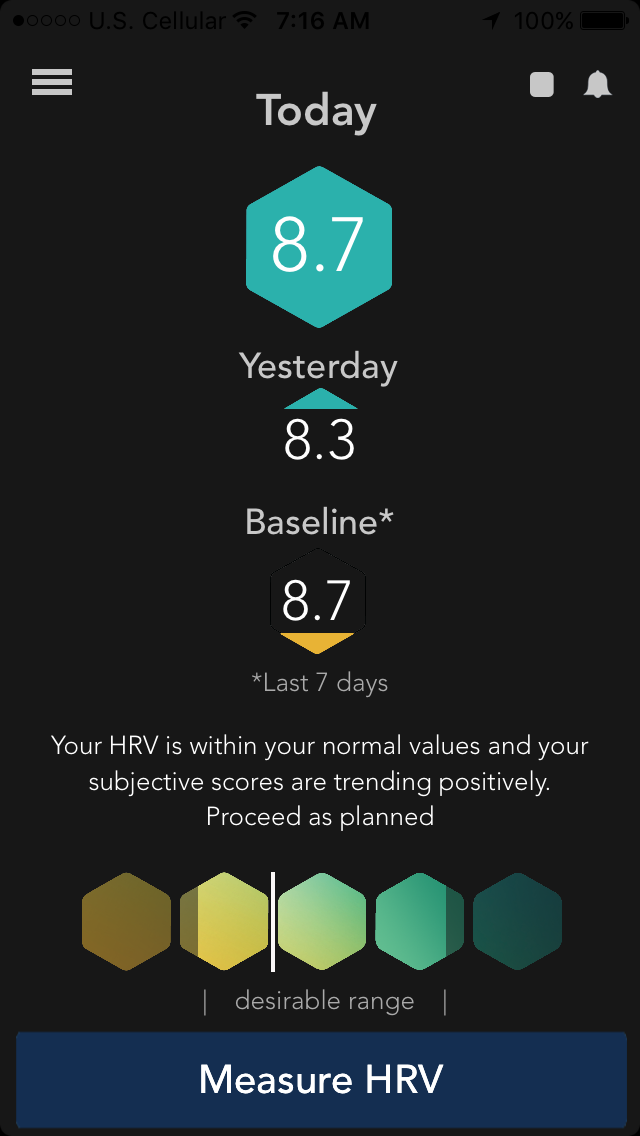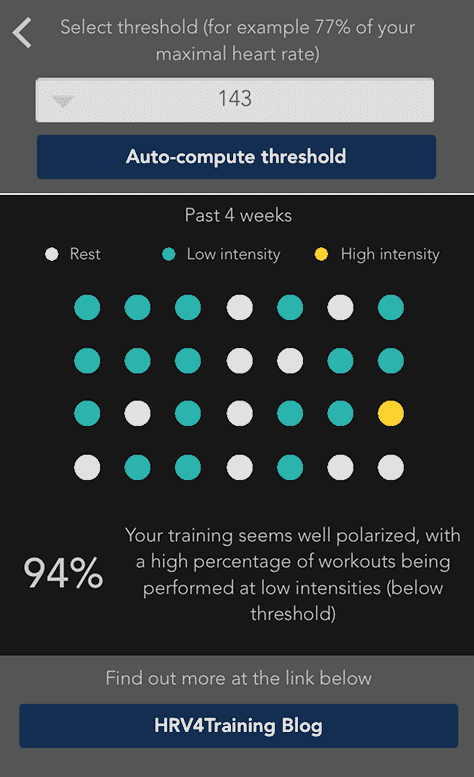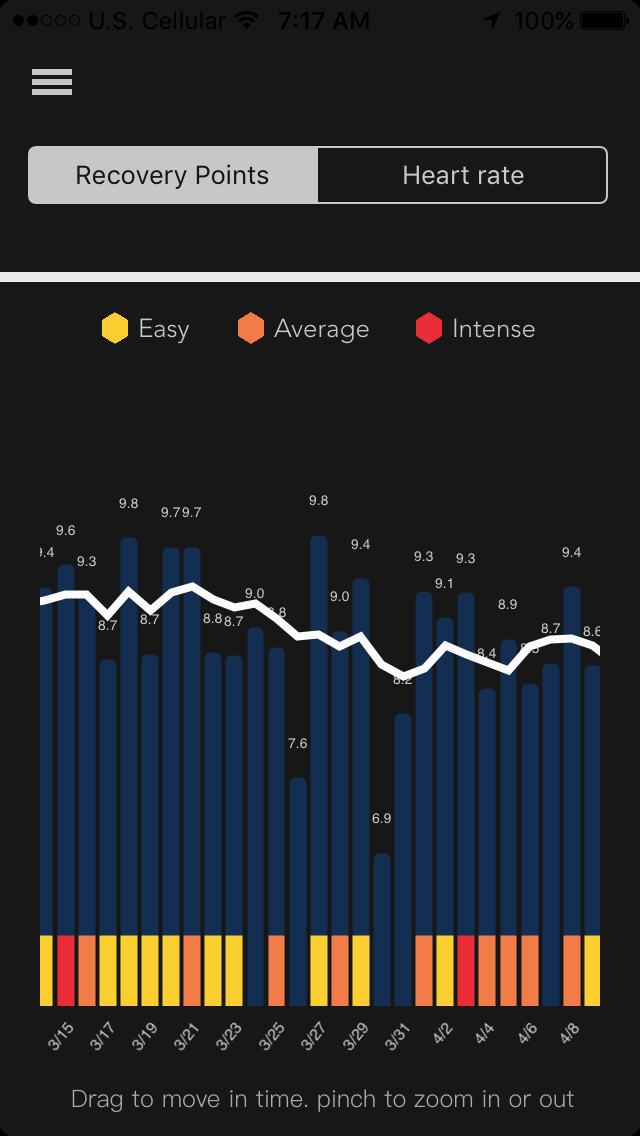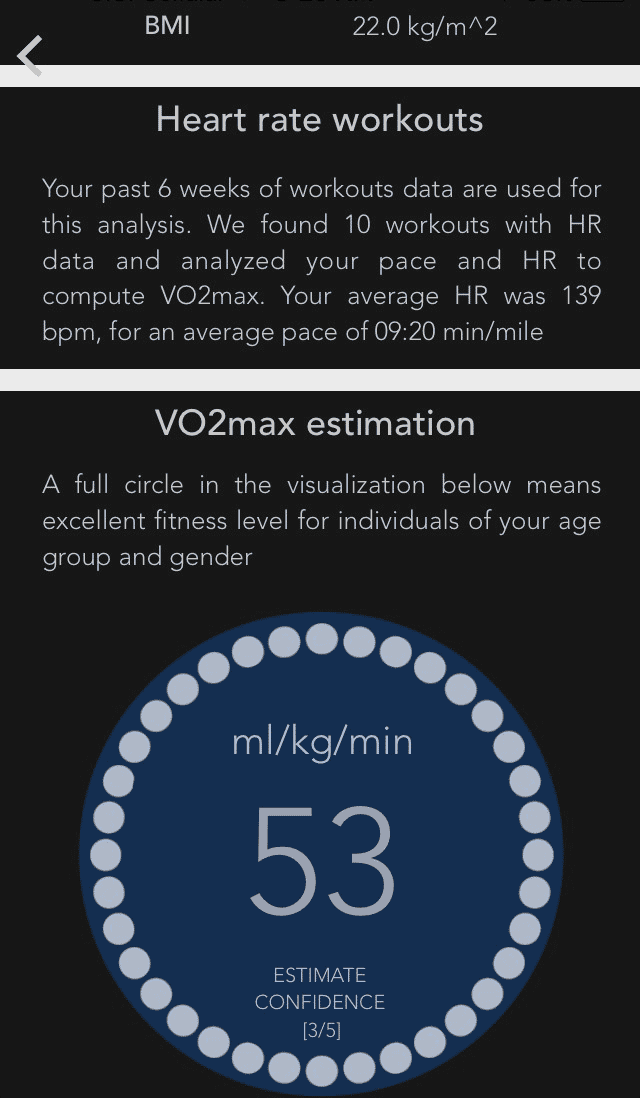App review: HRV4Training
About a month ago a helpful dude on the slowtwitch forums recommended I try out an iPhone app called HRV4Training. I’d been tracking my resting heart rate for a few years, but I wasn’t really gaining much insight into actual training recovery. Sure, I’d notice days where I was up a dozen bpm from the day before but that could be from a multitude of reasons and wasn’t cause to take an easy day (or off day) of training.
Enter heart rate variability (HRV).
Using the camera on your smartphone HRV4Training measures your heart rate variability data and plots it into an easy to understand metric (Recovery Points). It also pulls your training/workout data from Strava or TrainingPeaks and uses that data for a number of assessments.

The main function/screen of HRV4Training analyzes your daily recovery data and displays the measurement as Recovery Points.
The more data points HRV4Training has from your daily, morning HRV readings and pulled from your online training log (Strava, TrainingPeaks, etc.) the more options it opens up in the app. Awesome.
I’m a data geek. I use a heart rate monitor, power meter, cadence, footpod, GPS watch, Strava premium, etc. HRV4Training gives me a ton of useful new metrics to look at. From what I can tell, it really seems to do what it’s supposed to do. On three occasions it’s given me warnings about my training recovery points. One day was after a tough speedwork run and the other two days were when I was sick. It makes absolute sense that those were days to take it easy in training or in my case to fully take the day off training.
I really can’t say enough about this app. It was $10 when I got it on the iTunes store and I love technology with good value. Marco Altini, PhD. and Alessandra Saviotti continue to develop and update the app on a regular basis and I’m very confident the research in the field of HRV will continue to grow and yield results in sport science. The display interface of the app is nice and the online literature accompanying the app is extensive.
I was interested to see my estimated VO2 max number. I’m still two months away from my first race of the year and my workload and fitness reflects that. I read that with a VO2 max of 53 (my current level) one can expect to run a 5k in 19 minutes which is right inline with my PR. I’ll be interested to see how much that number increases as my triathlon seasonal fitness progresses.
Of course, nothing is perfect. If you take several consecutive HRV measurements, chances are you’ll get several different readings (albeit similar). That’s not cause for concern with the app because the human body is so dynamic I’d imagine they are actual readings, just with the heart beating differently minute-to-minute. That said, I hope they continue to develop the best technology to gather HRV whether using the phone camera or an external sensor like a Polar heart rate strap. At the present time, they have me convinced the camera on my smartphone is measuring the data accurately enough.
This is also not the end-all system to determine whether to take a day or more away from training. The app doesn’t measure soreness, injuries, illness, or biochemical markers like testosterone or cortisol levels. However, it does take into account illness, injuries and soreness in the daily questionnaire. I don’t think those answers are weighted into Recovery Points, but the app does give “daily advice” on the home screen with additional warnings regarding those answers you may have given. With use of the app (and some common sense) I think it’s a great system to help prevent overreaching and overtraining.



